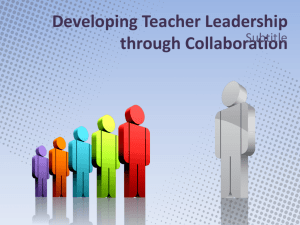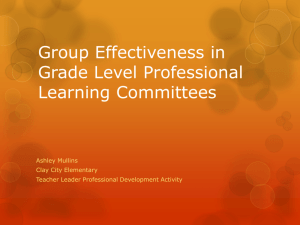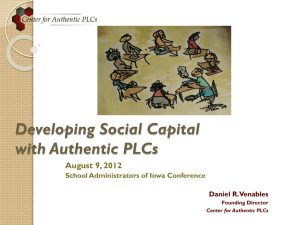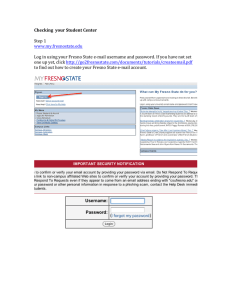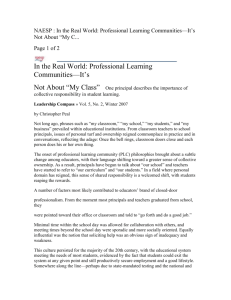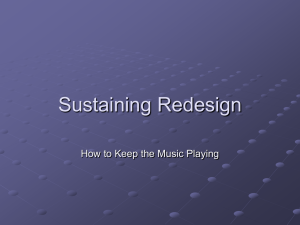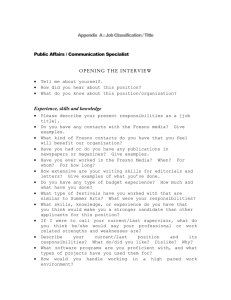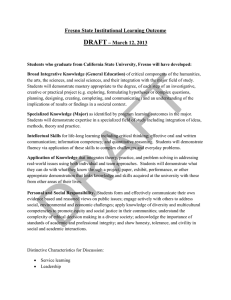Idea # 93
advertisement
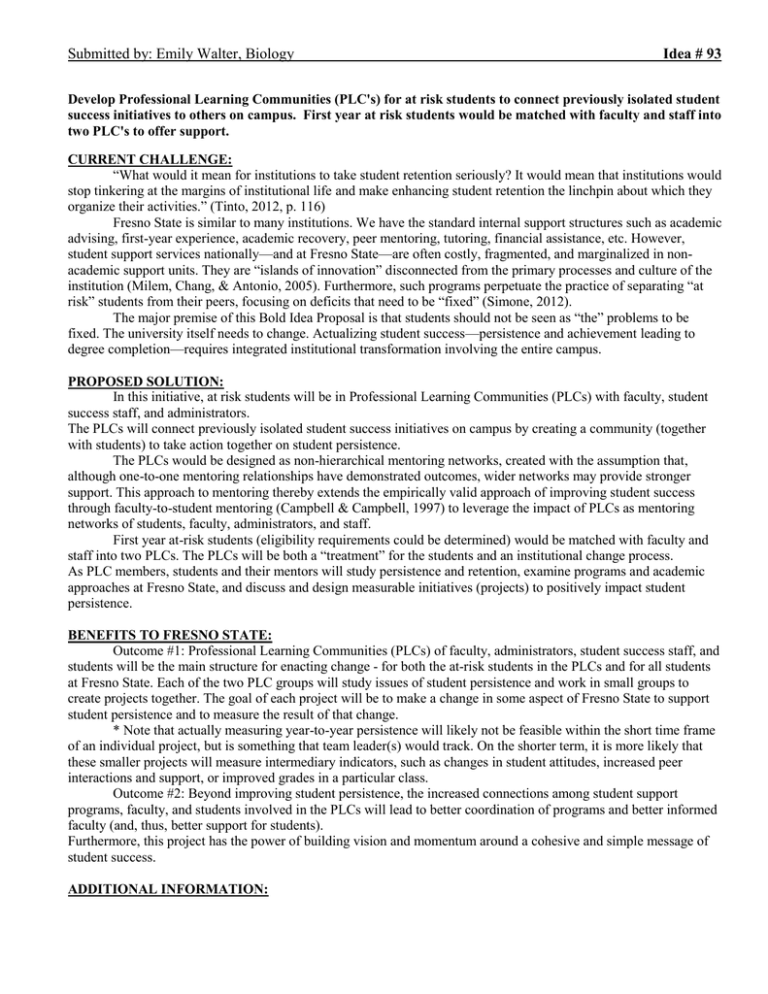
Submitted by: Emily Walter, Biology Idea # 93 Develop Professional Learning Communities (PLC's) for at risk students to connect previously isolated student success initiatives to others on campus. First year at risk students would be matched with faculty and staff into two PLC's to offer support. CURRENT CHALLENGE: “What would it mean for institutions to take student retention seriously? It would mean that institutions would stop tinkering at the margins of institutional life and make enhancing student retention the linchpin about which they organize their activities.” (Tinto, 2012, p. 116) Fresno State is similar to many institutions. We have the standard internal support structures such as academic advising, first-year experience, academic recovery, peer mentoring, tutoring, financial assistance, etc. However, student support services nationally—and at Fresno State—are often costly, fragmented, and marginalized in nonacademic support units. They are “islands of innovation” disconnected from the primary processes and culture of the institution (Milem, Chang, & Antonio, 2005). Furthermore, such programs perpetuate the practice of separating “at risk” students from their peers, focusing on deficits that need to be “fixed” (Simone, 2012). The major premise of this Bold Idea Proposal is that students should not be seen as “the” problems to be fixed. The university itself needs to change. Actualizing student success—persistence and achievement leading to degree completion—requires integrated institutional transformation involving the entire campus. PROPOSED SOLUTION: In this initiative, at risk students will be in Professional Learning Communities (PLCs) with faculty, student success staff, and administrators. The PLCs will connect previously isolated student success initiatives on campus by creating a community (together with students) to take action together on student persistence. The PLCs would be designed as non-hierarchical mentoring networks, created with the assumption that, although one-to-one mentoring relationships have demonstrated outcomes, wider networks may provide stronger support. This approach to mentoring thereby extends the empirically valid approach of improving student success through faculty-to-student mentoring (Campbell & Campbell, 1997) to leverage the impact of PLCs as mentoring networks of students, faculty, administrators, and staff. First year at-risk students (eligibility requirements could be determined) would be matched with faculty and staff into two PLCs. The PLCs will be both a “treatment” for the students and an institutional change process. As PLC members, students and their mentors will study persistence and retention, examine programs and academic approaches at Fresno State, and discuss and design measurable initiatives (projects) to positively impact student persistence. BENEFITS TO FRESNO STATE: Outcome #1: Professional Learning Communities (PLCs) of faculty, administrators, student success staff, and students will be the main structure for enacting change - for both the at-risk students in the PLCs and for all students at Fresno State. Each of the two PLC groups will study issues of student persistence and work in small groups to create projects together. The goal of each project will be to make a change in some aspect of Fresno State to support student persistence and to measure the result of that change. * Note that actually measuring year-to-year persistence will likely not be feasible within the short time frame of an individual project, but is something that team leader(s) would track. On the shorter term, it is more likely that these smaller projects will measure intermediary indicators, such as changes in student attitudes, increased peer interactions and support, or improved grades in a particular class. Outcome #2: Beyond improving student persistence, the increased connections among student support programs, faculty, and students involved in the PLCs will lead to better coordination of programs and better informed faculty (and, thus, better support for students). Furthermore, this project has the power of building vision and momentum around a cohesive and simple message of student success. ADDITIONAL INFORMATION:
